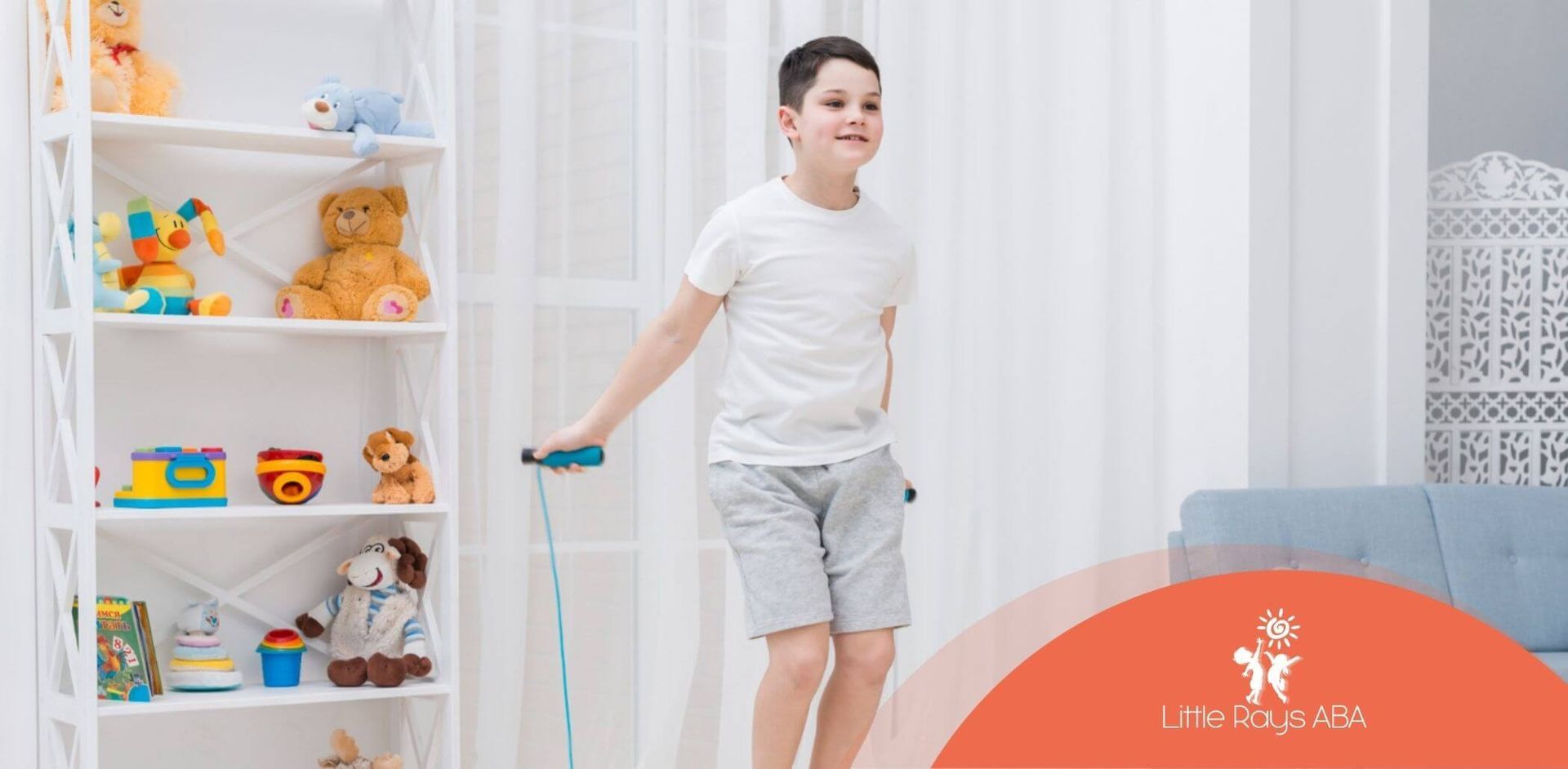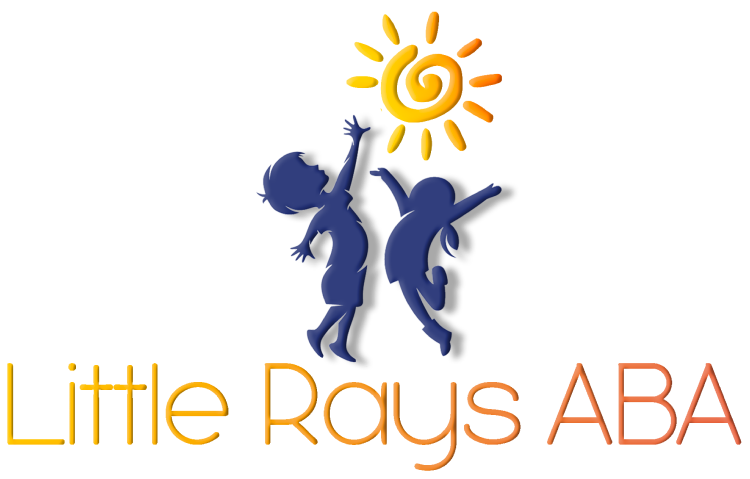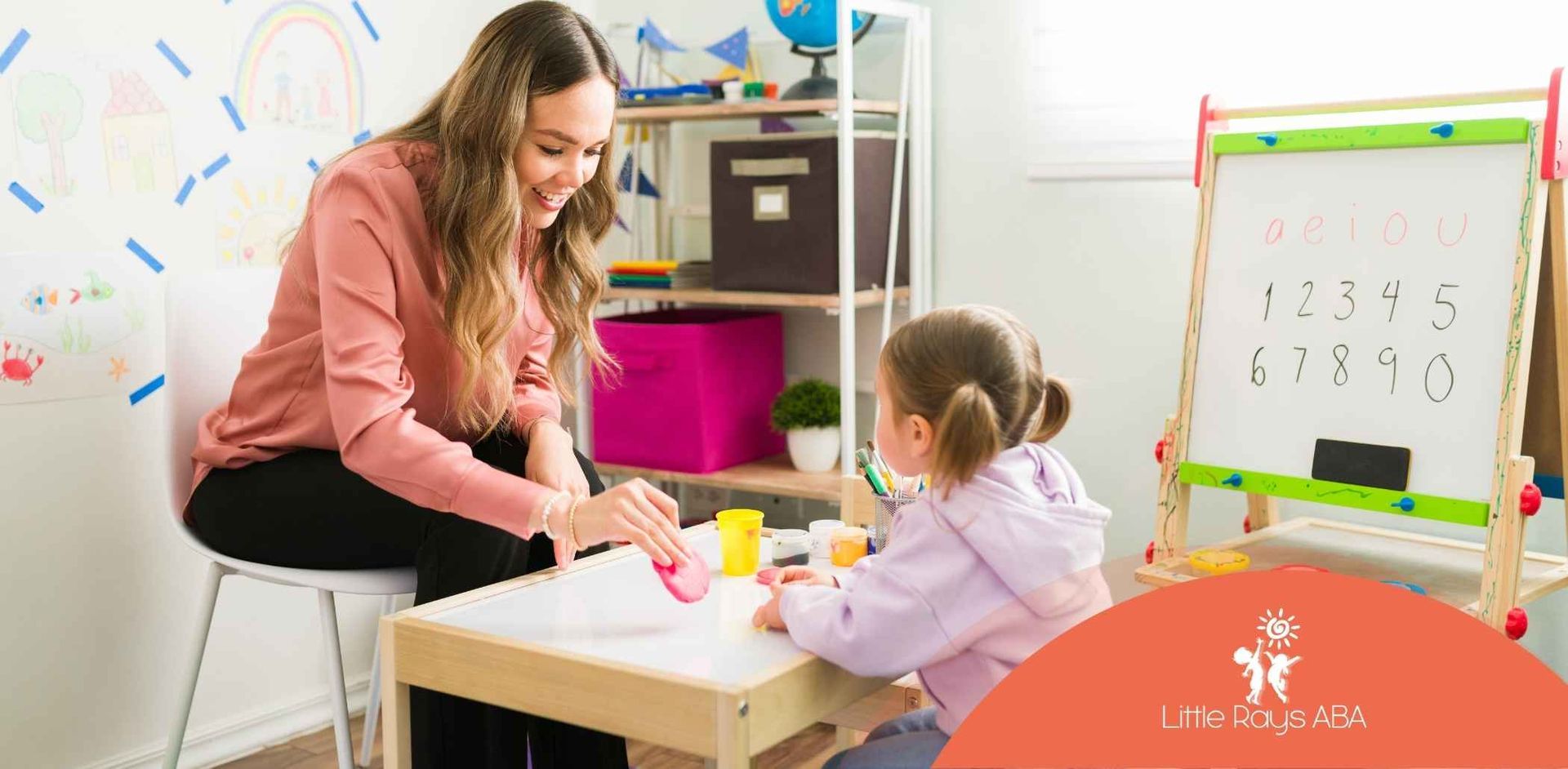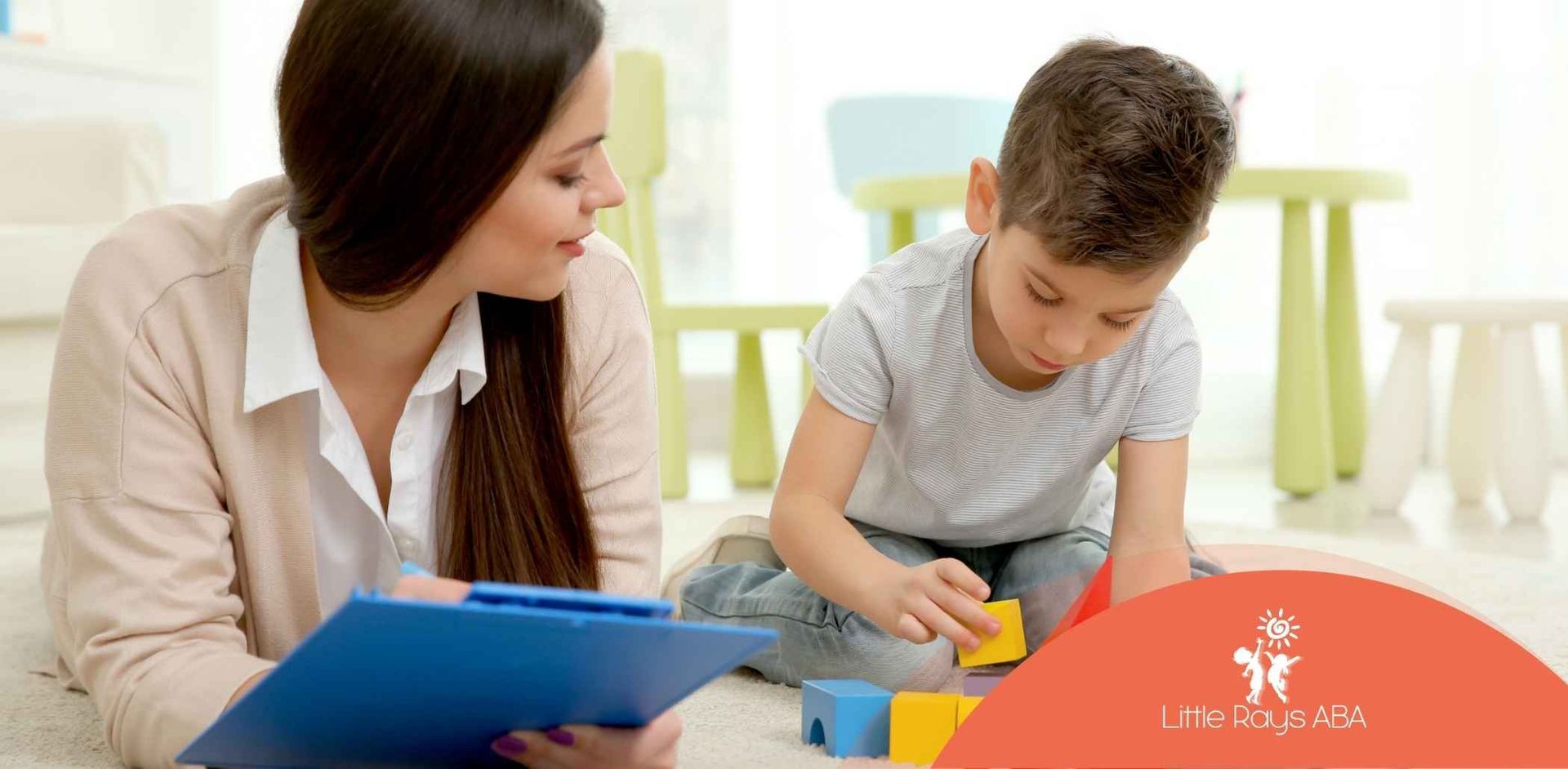
Sensory Breaks for Autism: Practical Tips to Manage Overload and Enhance Focus
Sensory input can be overwhelming for children on the autism spectrum. Whether it's a crowded classroom or a noisy street, they might struggle with processing sensory information, which can lead to anxiety, frustration, or sensory overload. Sensory breaks provide a structured opportunity to pause, reset, and manage these experiences.
As an ABA therapist in Florida working with children on the spectrum, I've seen how sensory breaks can transform a child's ability to cope with their surroundings.
When implemented correctly, these breaks support sensory regulation and help children feel more at ease in both home and school environments.
In this article, we’ll explore the importance of sensory breaks, why they’re crucial for autistic children, and how you can incorporate them into daily routines.
Understanding Sensory Breaks and Autism
What Are Sensory Breaks?
Sensory breaks are short, structured pauses designed to help individuals manage sensory input. These breaks allow children to reset their sensory systems when they become overwhelmed or overstimulated.
Sensory breaks can be tailored to meet a child’s specific sensory needs, offering either calming or energizing activities, depending on the situation.
Personal Experience as a BCBA
One of my clients, a young boy named Jack, used to become overwhelmed during reading time in class. He would often cover his ears and become anxious when the classroom noise became too much.
After implementing a sensory break plan with calming activities (like sitting in a quiet corner with a weighted lap pad), Jack's anxiety significantly decreased. He was able to return to his classroom activities with greater focus and less stress.
The Role of ABA and Occupational Therapy
Occupational therapists often play a critical role in developing sensory diets for children with autism.
A sensory diet is a personalized plan that includes activities designed to help children regulate their sensory systems throughout the day. These activities are based on the child’s sensory preferences and needs.
As an ABA therapist, I’ve collaborated with occupational therapists to ensure that the sensory breaks we incorporate align with the sensory needs of each child. This collaboration has been instrumental in supporting kids with autism, as it takes their unique experiences into account and ensures the effectiveness of their sensory breaks.
Why Sensory Breaks Matter for Autistic Individuals
Managing Sensory Overload
For children on the autism spectrum, sensory overload is a common challenge. When a child experiences too much sensory input at once—whether it's bright lights, loud noises, or bustling environments—their nervous system can become overwhelmed.
Sensory breaks help manage these overwhelming feelings by giving children a chance to reset and regain emotional balance.
Example from My Work
In my experience as a BCBA, I worked with a young girl named Emily, who would often have meltdowns in the grocery store due to the bright lights and loud noises.
By giving her sensory breaks during outings—such as a few minutes in a quiet corner or a brief walk outside—she was able to manage sensory overload more effectively. These short breaks allowed her to re-enter the environment with greater calm and focus.
Restoring Emotional Balance
Sensory breaks are essential in helping autistic children regain emotional balance. When properly implemented, they help reduce anxiety, regulate emotions, and give children a sense of control over their environment.
The goal is not only to reduce stress but also to support the child in staying engaged with their daily activities.
Recognizing the Need for Sensory Breaks
Identifying Sensory Overload
Understanding when a child needs a sensory break starts with recognizing the signs of sensory overload. Every child is different, but common signs include:
- Fidgeting or an inability to stay still.
- Covering ears or eyes to block out sensory input.
- Emotional outbursts, like meltdowns or tantrums.
- Avoiding physical contact or becoming upset when touched.
- Restlessness, irritability, or general discomfort.
These signs indicate that a child’s nervous system is becoming overwhelmed and that a sensory break might be needed to prevent further stress or escalation.
How to Read Sensory Cues
As an ABA therapist, one of the most important skills I've developed is reading the sensory cues children give. Every child communicates their needs differently, but once you’re familiar with their behavior patterns, it becomes easier to tell when they need a break.
For instance, one child I worked with would start pacing back and forth when she was getting close to sensory overload. Recognizing this sign allowed us to offer a sensory break before she reached a point of distress.
Types of Sensory Breaks
Calming Sensory Breaks
Calming sensory breaks are meant to reduce sensory input and help children relax when they’re feeling overwhelmed. These breaks typically involve activities that provide deep pressure or soothing sensations.
Some examples include:
- Using weighted blankets or lap pads for deep, calming pressure.
- Creating a quiet corner with soft lighting and calming music.
- Engaging in slow, rhythmic movements, like rocking or yoga poses.
- Offering tactile sensory tools such as squishy toys or putty.
- Providing oral sensory input, such as chewing on crunchy snacks.
Personal Experience
I’ve seen how effective calming breaks can be, especially for children who are sensory avoidant. For example, one of my clients, Sarah, would often become overwhelmed by classroom noise.
When we provided her with a quiet space and a weighted blanket, she was able to regain composure and return to her tasks with a much calmer demeanor.
Energizing Sensory Breaks
Energizing sensory breaks are designed for children who seek stimulation or need extra movement. These breaks involve activities that increase energy and alertness.
Some examples include:
- Jumping jacks or dancing to music.
- Spinning or swinging to get vestibular input.
- Using fidget toys to engage the hands and calm the mind.
- Running or climbing in a structured environment.
- Participating in rhythm-based activities, like drumming or clapping.
I worked with a boy named Tim, who had a lot of energy and would often fidget during group activities. By giving him energizing breaks, such as jumping on a mini-trampoline or playing with a fidget spinner, he was able to release excess energy and stay focused on his tasks.
Practical Sensory Break Ideas for Home and School
Indoor Sensory Breaks
Creating a sensory-friendly space at home or school can provide a peaceful retreat for children who need a break. A quiet space with sensory tools, like weighted lap pads, fidget toys, and soft seating, can help children self-regulate during moments of overload.
One of the most effective sensory breaks I’ve implemented in a classroom is a “calming corner.” This is a designated space filled with pillows, soft lighting, and calming sensory tools.
Children can go to this corner when they start to feel overwhelmed, allowing them to reset before returning to their activities.
Outdoor Sensory Breaks
Outdoor breaks can also be highly beneficial, offering fresh air and natural sensory experiences. Activities like nature walks, playing in a ball pit, or using a swing can help children process sensory input and stay regulated.
I’ve noticed that outdoor breaks tend to be especially helpful for children who need more physical activity. I once had a child who would calm down after swinging at the park. The rhythmic motion and the fresh air were exactly what he needed to reset.
Making Sensory Breaks Effective
Consistency and Personalization
The effectiveness of sensory breaks lies in their consistency and personalization. By observing a child's unique sensory needs, you can tailor sensory activities to best support them. Scheduling regular breaks throughout the day also helps to prevent sensory overload before it starts.
It’s also important to communicate with other caregivers and educators to ensure breaks are integrated into the child’s routine consistently. I’ve seen firsthand how beneficial it is for children to have a clear and predictable routine, where sensory breaks are a regular part of their day.
Conclusion
Sensory breaks are invaluable tools for children with autism. By offering tailored breaks that meet their sensory needs, we can help them manage sensory overload, reduce anxiety, and maintain emotional balance. Whether at home or in school, sensory breaks provide children with the support they need to thrive in their daily routines.
By recognizing the signs of sensory overload and responding with effective breaks, we can make a positive impact on their overall well-being.
Frequently Asked Questions
How long should a sensory break last?
A sensory break will usually last between 5 and 15 minutes. The length can change based on what the person needs and their situation. Changing how long the sensory break is to match how the person feels can make it better. This way, they will feel fresh and ready to start again after the break.
Can sensory breaks be used in classrooms?
Yes, you can use sensory breaks in the classroom. They help students with autism get a chance to relax, lower their stress, and focus better. When you add short and planned breaks, it can help everyone learn more. It also helps make a space where all the students feel welcome and included.
What are the best tools for sensory breaks?
Some of the best tools you can use for sensory breaks are weighted blankets, fidget toys, noise-canceling headphones, and sensory bins filled with things you can touch. These help with many sensory needs. They give comfort and keep you busy during breaks at home or school.
Sources:
- https://www.autismparentingmagazine.com/sensory-break-activities/
- https://www.woodhousewest.org.uk/sensory-breaks-3/
- https://pmc.ncbi.nlm.nih.gov/articles/PMC10687592/
- https://home.lps.org/mtssb/files/2016/08/SensoryBreaksandSensoryStrategies-1.pdf?file=2016/08/SensoryBreaksandSensoryStrategies-1.pdf
- https://journals.sagepub.com/doi/10.1177/0308022620982888
Related Posts





